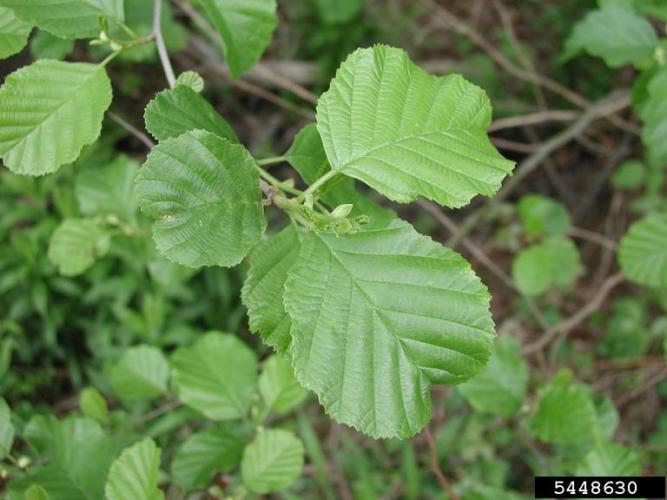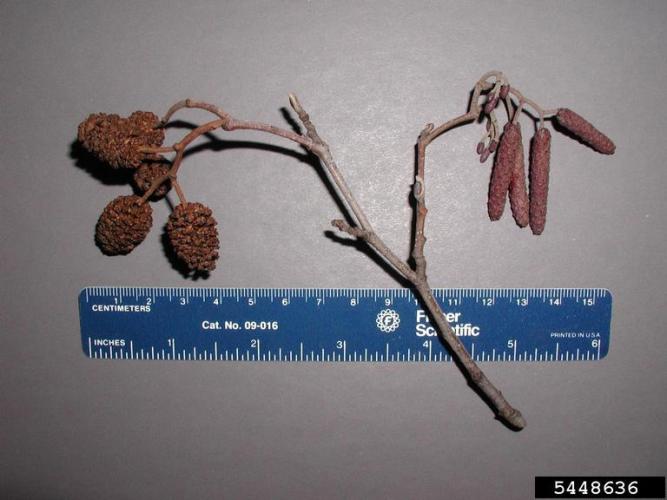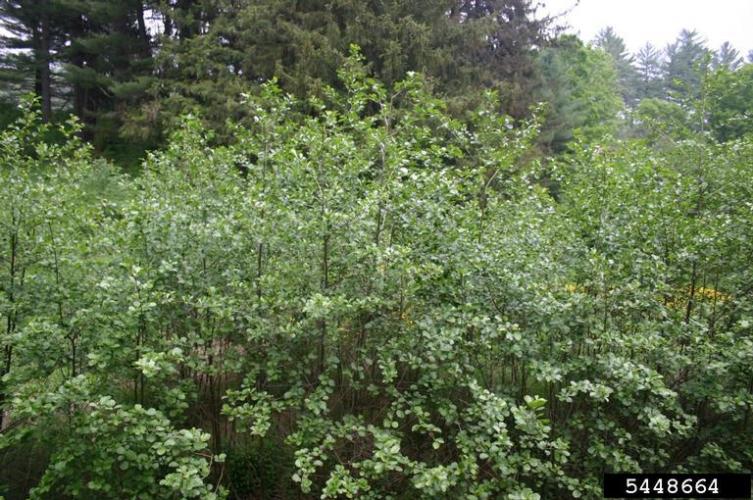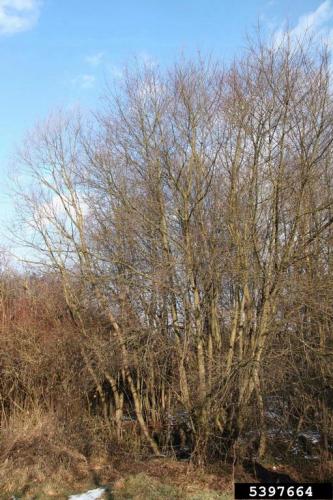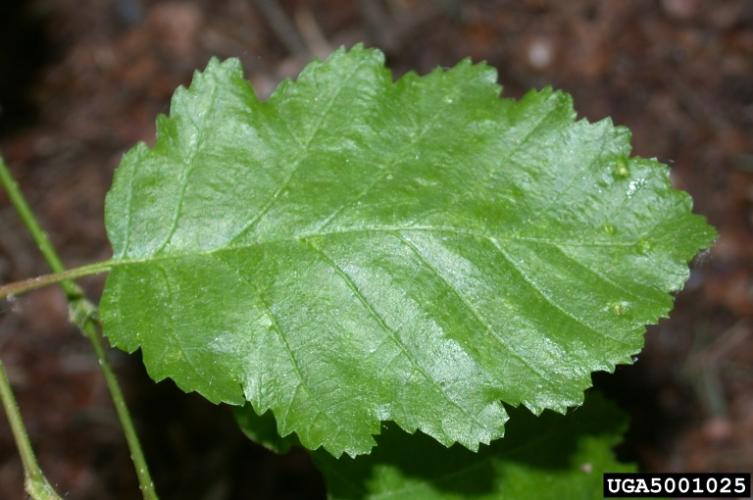European Alder
Identification
Appearance
Alnus glutinosa is a tree in the birch family that can grow up to 50 feet tall with the crown spreading from 20-40 feet wide. It can be single or multi-stemmed, with a smooth grayish-green bark that turns a speckled grayish-brown.
Foliage
The leaves are simple, alternate and doubly-toothed.
Flowers
The individual flowers are small and inconspicuous individually, but together they form a catkin. They flower in the spring and catkins remain on the trees through the fall.
Fruit
Fruits are obovate samaras. The wings are reduced to narrow thickened ridges.
Biology
This species is considered a watch list species.
Ecological Threat
It is a pioneer and opportunist species that readily colonizes open ground. Its ability to be dispersed by water, and its ability to form monospecific stands, makes it a threat to native wetland species. As a nitrogen-fixing plant, it has the ability to become established on very poor soils.
Origin
It is native across Europe, temperate Asia, and north Africa. It has been planted extensively in North America as an ornamental tree and for erosion control.
Habitat
Although it can tolerate droughts, it prefers moist, damp conditions, especially near water sources. It commonly grows in riparian zones, wetlands, along ponds and lakes. It also grows in forests, forest wetlands and in urban areas.
Life cycle
Alnus glutinosa have the potential to immediately germinate, however, stratification (six weeks) increases germination success. The optimum conditions for A. glutinosa seed germination occur at pH 4 and 25 °C in either light or dark. Once germinated, seedlings are susceptible to low soil oxygen status and drought. Maturity takes 3 - 30 years, depending on ecotype and environment. A. glutinosa is relatively short-lived, with a lifespan of up to 160 years.
Vermont Distribution
Citations
Photo Credit
5448630, 5448636, 5448664, Leslie J. Mehrhoff, University of Connecticut, Bugwood.org
5001025, Mary Ellen (Mel) Harte, Bugwood.org
5397664, Robert Vidéki, Doronicum Kft., Bugwood.org
Information Credit
Invasive Plant Atlas of New England
Global invasive species database
